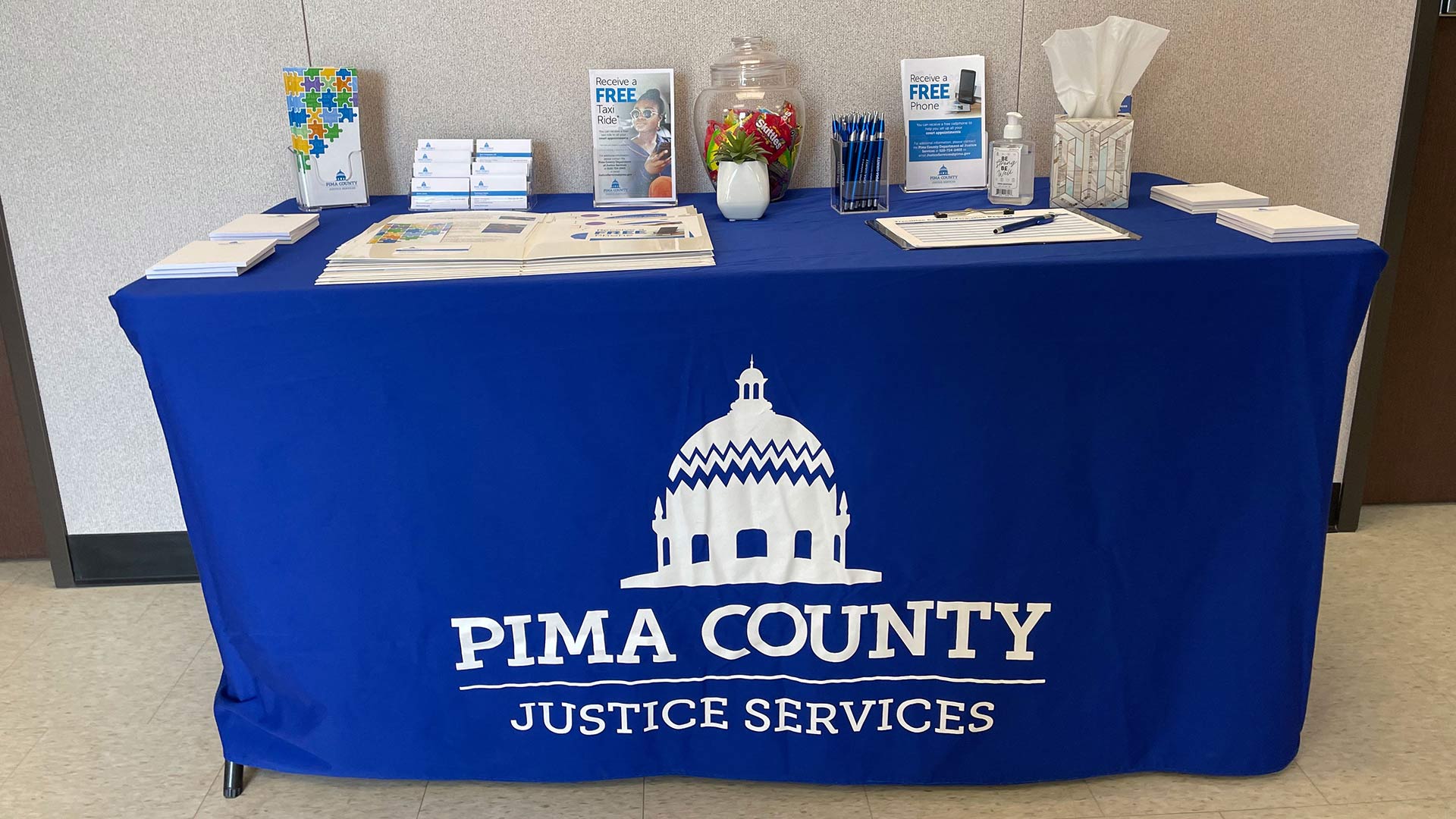 A table offering resources to recently released inmates at the Pima County Transitions Center.
A table offering resources to recently released inmates at the Pima County Transitions Center.
Pima County’s post-release program, aimed at reducing repeat offenses and improving court appearance rates, is seeing changing demands as it marks 18 months in operation.
The Transitions Center, operated by the County’s Justice Services department, is located outside the Pima County Adult Detention Center. Workers called “Justice Navigators” intercept those recently released from jail and help coordinate with community services, which can include housing, transportation, court date reminders, and drug and mental health treatment.
Most users are now inmates leaving the jail, according to the program’s 18 month report, which means they have expanded their service to people with felony charges as well as misdemeanors.
“Justice Navigators report that these participants require more intensive intervention, coordination with external agencies, and follow-up, rather than just warm handoffs to community services, which are more common among lower-risk individuals,” the memo reads.
From August 2024 to February 2025, 46% of their referrals came from jail releases.
Last year, the Transitions Center saw an average of 115 individuals a month, but in the last six months that number has increased to over 300. Only about 8% returned to the center with new charges.
Justice Services Director Kate Vesely told the Pima County Board of Supervisors on April 1 the increase is due to new marketing inside the jail, and a facility update that allows a more accessible path to its entrance.
Another notable change; 14% of their cases were walk-ins.
“This includes law enforcement drop offs, but also folks who have just come in off the street. Many of them have pending charges but have not been to jail or got released from jail some time ago. Others are family members who are trying to find services for an incarcerated loved ones, and they're looking for how to navigate the justice system,” Vesely said.
According to county data, a person is 67% less likely to face rearrest if they are connected with housing, but a consistent lack of available shelter beds remains the Transition Center’s biggest challenge.

By submitting your comments, you hereby give AZPM the right to post your comments and potentially use them in any other form of media operated by this institution.